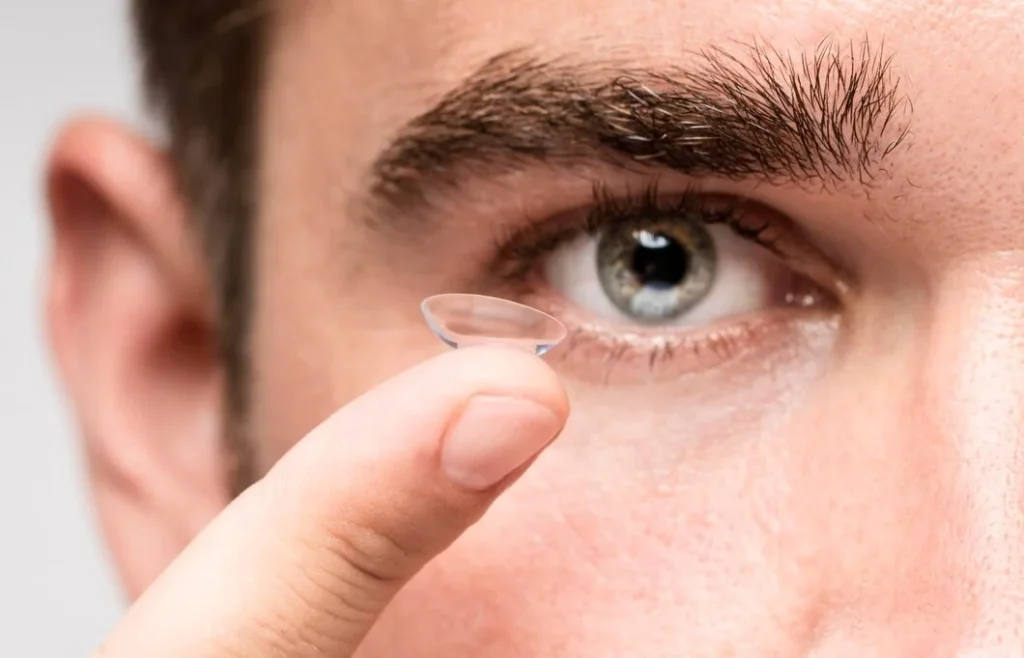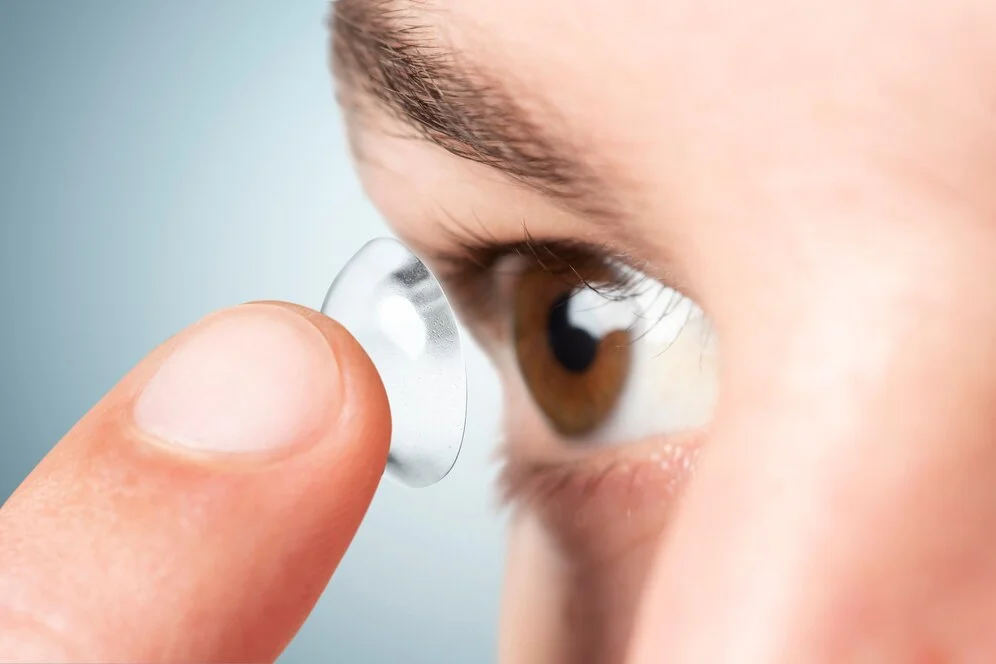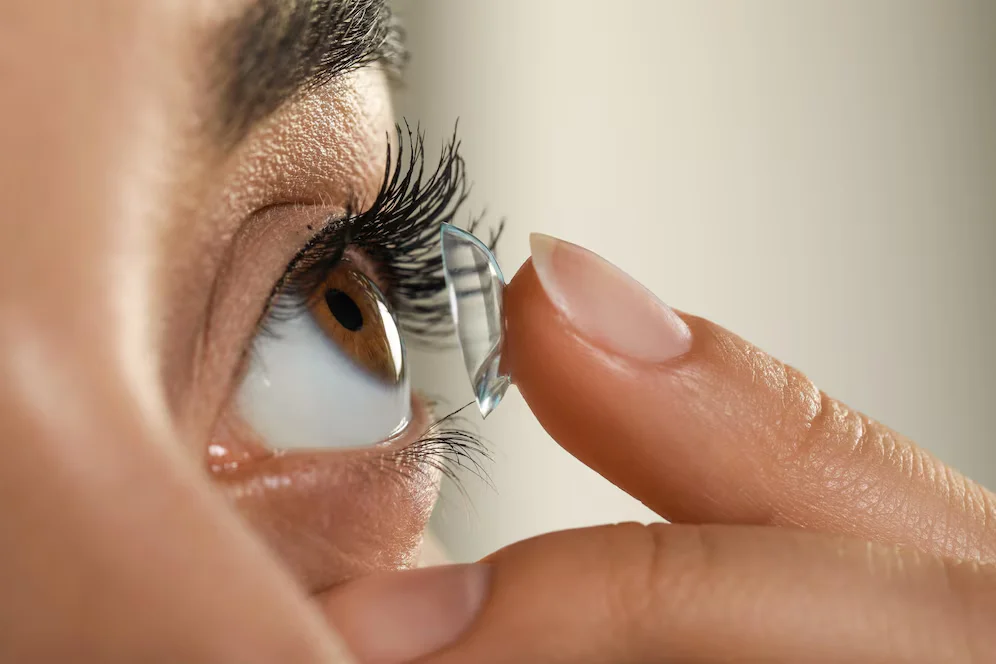Smart Contact Lenses are transforming vision care by enabling real-time eye health monitoring. As advancements in technology enhance professional eye care, these lenses play a crucial role in early disease detection and proactive eye health management.
Smart Contact Lenses: A New Era in Eye Care
Imagine a world where your contact lenses do more than just correct your vision. What if they could track eye health, detect diseases early, and even monitor real-time glucose levels for diabetic patients? This is no longer a futuristic dream but a reality with Smart Contact Lenses.
With advancements in ophthalmology, these lenses are changing how eye health is monitored, providing crucial data without invasive tests. Whether you’re concerned about glaucoma, dry eyes, or diabetes-related vision issues, smart lenses could be a game-changer.

In this article, we’ll explore how this innovation is reshaping eye care, who can benefit from it, and what the future holds.
What Are Smart Contact Lenses?
Smart Contact Lenses are technologically advanced lenses embedded with microelectronics and sensors. Unlike traditional lenses, these provide real-time data about various eye conditions, helping both patients and doctors monitor eye health without the need for frequent clinical visits.
Key Features of Smart Contact Lenses:
- Intraocular Pressure Monitoring: Useful for detecting and managing glaucoma.
- Tear Analysis: Can measure biomarkers for diseases like diabetes and dry eye syndrome.
- Drug Delivery System: Some models can release medication gradually into the eye.
- Wireless Connectivity: Syncs with mobile apps or medical devices for real-time monitoring.
These features not only assist patients in tracking their eye health but also help ophthalmologists make accurate diagnoses.
How Do Smart Contact Lenses Work?
1. Embedded Sensors
The lenses come with ultra-thin microchips and tiny sensors that track vital eye health metrics. These sensors are designed to be non-intrusive and comfortable for the wearer.
2. Wireless Data Transmission
Collected data is transmitted via Bluetooth or radio waves to connected devices like smartphones, smartwatches, or medical monitoring systems.
3. Early Detection & Alerts
Some Smart Contact Lenses have an alert system that notifies users of irregularities, allowing early medical intervention.
This seamless technology ensures constant eye monitoring without disrupting daily life.

The Role of Smart Contact Lenses in Eye Health
1. Managing Glaucoma with Smart Contact Lenses
One of the most groundbreaking applications of Smart Contact Lenses is in glaucoma management. Since glaucoma is caused by increased intraocular pressure (IOP), these lenses help measure and track IOP fluctuations, alerting patients to seek timely medical intervention.
2. Diabetes and Eye Health Monitoring
For diabetics, these lenses can monitor glucose levels by analyzing tear fluid, reducing the need for frequent blood tests. This non-invasive approach helps prevent diabetes-induced vision loss.
3. Dry Eye Syndrome & Tear Analysis
Many patients suffer from chronic dry eye syndrome, which can be hard to diagnose accurately. Smart lenses can assess tear composition and hydration levels, offering precise treatment recommendations.
4. Post-Surgical Recovery Assistance
After eye surgeries, monitoring recovery progress is crucial. Smart Contact Lenses provide real-time insights into healing, reducing post-operative complications and improving patient outcomes.
Challenges and Future of Smart Contact Lenses
Current Limitations
- Cost Factor: Being a high-tech innovation, affordability is a concern.
- Battery Life: Miniature electronics require ultra-efficient energy solutions.
- Regulatory Approvals: Widespread adoption depends on FDA and other regulatory approvals.
What Lies Ahead?
Ongoing research aims to enhance these lenses with augmented reality (AR) capabilities, improved battery life, and greater accuracy in disease detection. As technology progresses, we can expect even more sophisticated applications in the coming years.
Finding the Right Specialist for Eye Care
If you’re considering advanced eye care solutions, consulting a top ophthalmologist is crucial. The best professionals stay updated with the latest technology, including Smart Contact Lenses, and can provide personalized advice.
Qualities to Look for in an Eye Surgeon:
- Expertise in Modern Treatments: Familiarity with the latest advancements in ophthalmology.
- Patient-Centered Approach: Focused on long-term eye health rather than temporary fixes.
- Experience with Cutting-Edge Technologies: Ability to integrate Smart Contact Lenses into treatment plans.
Leading ophthalmologists are embracing these innovations, integrating state-of-the-art technology into their practice to enhance eye care and improve patient outcomes.

Frequently Asked Questions (FAQs)
1. Are Smart Contact Lenses safe to use?
Yes, they undergo rigorous testing before approval. However, users should follow proper guidelines and consult their doctor before use.
2. Can Smart Contact Lenses correct vision like regular lenses?
Yes, some models offer vision correction alongside health monitoring capabilities.
3. Are these lenses available for public use?
As of now, some versions are available for clinical trials, but widespread commercial availability is expected soon.
4. How do Smart Contact Lenses transmit data?
They use wireless technology such as Bluetooth or NFC to send real-time data to connected devices.
5. Who should consider using Smart Contact Lenses?
They are ideal for individuals with glaucoma, diabetes, dry eye syndrome, or those requiring continuous eye monitoring.
Revolutionizing Eye Care: The Future of Smart Contact Lenses
Smart Contact Lenses are set to transform eye care by providing real-time health insights, aiding in early disease detection, and improving patient management. Though still evolving, they represent a significant step towards a future where monitoring eye health is effortless and highly accurate.
Consulting with a reputed ophthalmologist is the best step forward for those interested in learning more or exploring advanced eye care options. With experts leading the way, such groundbreaking innovations can soon become a part of everyday healthcare.

